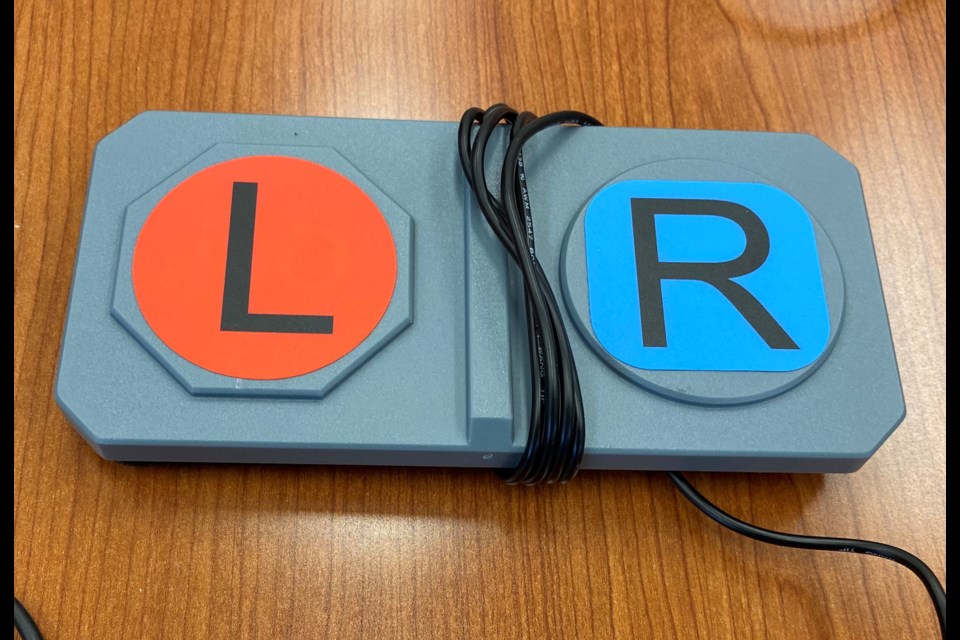City of Sault Ste. Marie staff are aggressively testing and training on new voting technology to be used in time for this year's municipal election.
New accessible voting options include special devices to allow voters with disabilities a confidential, independent way to cast their ballots, using a sip-and-puff device, a paddle device or a hand-held vote selector device.
A set of headphones provides instructions for navigating through an audio version of the ballot.
"An attached printer then marks the voter’s paper ballot, and this ballot marked by the printer is indistinguishable from other ballots marked by hand," said an information handout distributed by the city on Wednesday.
"When the voter has finished making their ballot selections, the vote choices are read back to the voter via the same audio interface, and the voter has a chance to either confirm or reject the vote confirmation," the handout said.
"The voter has the choice of confirming their vote selections, or going back into the audio ballot and changing their vote selections."
"All tabulator information presented to standard voters using paper ballots, including instructions, warnings, errors, and other messages regarding ballot choices, are presented to the accessible voter performing the audio verification."
As soon as voters are satisfied with their choices and they confirm their selections, the paper ballot is marked by a printer near the voter.
"This ballot marked by the printer will be indistinguishable from a ballot marked by hand, because the tabulator has a library of random hand-made marking images, which it prints on the ballot, so that the printed markings look like marks made by hand with a pen," the handout said.
"This feature ensures that if the paper ballots or ballot images are later reviewed by election officials, they will not be able to determine which ballots were made by the ballot marker device, thereby maintaining accessibility voter privacy."
After the ballot has been marked by the printer, it will be fed into a vote-counting tabulator, which can scan approximately 2,000 ballots an hour.
The new accessibility technology will be available only at advance polls at the Ronald A. Irwin Civic Centre, not on voting day Oct. 24.
The following are dates and times for advance polls:
- Saturday, Oct. 8: 10 a.m. to 6 p.m.
- Wednesday, Oct. 12: 10 a.m. to 8 p.m.
- Saturday, Oct. 15: 10 a.m. to 6 p.m.
As SooToday has previously reported, the city will have vote tabulators from Dominion Voting Systems at every polling location on election day, Oct. 24.
That will be the first local election using anything other than manually counted paper ballots.
After the polls close, all the tabulators will be brought to the Civic Centre.
There, members of the city's information technology staff will cut security keys from the machines in the presence of scrutineers and any media that wish to attend.
Cards containing voting results will then transfer data to the city's system, which will display results on a web page.
The tabulators are not connected to the Internet, city clerk Rachel Tyczinski told SooToday.
How soon should we get results on Election Day?
Tyczinski figures it should take about 10 minutes after the polls close to pack the tabulators into vehicles, as much as 20 more minutes to drive them to the Civic Centre from polling stations as far away as the Grand Gardens.
"We do have our IT staff on call all day, one for each ward."
"We also have a Dominion Voting rep here in case something really goes awry."
"We've got back-up tabulators to go out in the field."
"We're done all kinds of testing. We also have a contingency plan that, in the unlikely event that the tabulator had worked all day and then for some reason wouldn't print off the results, then they're going to pack that up with the ballot box with all the ballots, bring it down here and we would [review the ballots] in full view of the scrutineers and media to be completely transparent. We'd use a back-up to pull that data," Tyczinski said.
